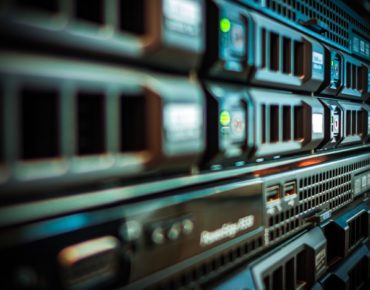Bulging Datacenters Fuel Ethernet Adapter Growth

All those huge data sets swirling around datacenters for running more AI and machine learning workloads are proving to be a boon for network adaptor equipment vendors.
For example, the Ethernet adapter market reached $1.7 billion in 2019, marking the first time that demand for equipment with speeds of 25 gigabits or higher has breached $1 billion, according to Omdia. That result was in line with the market tracker’s forecast for server and storage connectivity.
Intel Corp. (NASDAQ: INTC) remains the top supplier of Ethernet adapter gear, holding 24 percent of the market despite a 7-percent decline in annual revenues totaling $424 million. The big gainers were No.2 Mellanox (NASDAQ: NVDA) and Broadcom (NASDAQ: AVGO).
Mellanox grabbed 21 percent of the adapter market on the strength of 8-percent annual revenue growth to $358 million. Meanwhile, Broadcom saw its adapter revenue jump 29 percent year-on-year to $249 million.
Microsoft’s (NASDAQ: MSFT) annual adapter revenues plummeted 25 percent compared with the previous year.
Omdia attributed Intel’s drop-off to the phasing out of its 1- and 10-gigabit adapters as it rolls out next-generation gear this year.
Meanwhile, Nvidia-owned Mellanox reported strong demand for its 10- and 100-gigabit offload adapters as datacenter operators ramp up server virtualization and microservices like application containers used to handle machine learning and data analytics workloads.
Those deployments drove datacenter server utilization, increasing “server connectivity bandwidth requirements, and the need for higher speed Ethernet adapters” said Vlad Galabov, Omedia datacenter IT analyst.
The market researcher said the transition to 25-gigabit network adapters is underway, accounting for more than a quarter of total datacenter Ethernet adapter ports and revenues last year. Growing demand has shaved the average cost of a single 25-gigibit port in 2019 to $81.
While growing more slowly, Omdia said uptake of 100-gigabit adapters is ramping up among cloud service providers and other early enterprise adopters. “Cloud service providers are leading the transition to faster networks as they run multi-tenant servers with a large number of virtual machines [along with] containers per server,” Galabov added. “This is driving high traffic and bandwidth needs.”
Hence, the tech analyst is bullish on the Ethernet adapter market despite the COVID-19 lockdown. Adapter revenue is expected to grow 21 percent through 2025. Growth will be driven by Ethernet adapters capable of on-card processing of memory, network and storage protocols. That feature along with the ability to offload server memory access are forecast to account for half of 2020 revenues, or $1.1 billion.
Meanwhile, Ethernet adapters that can be customized using FPGAs or systems-on-chip are forecast to account for another one-quarter of the 2020 adapter revenues.
Related
George Leopold has written about science and technology for more than 30 years, focusing on electronics and aerospace technology. He previously served as executive editor of Electronic Engineering Times. Leopold is the author of "Calculated Risk: The Supersonic Life and Times of Gus Grissom" (Purdue University Press, 2016).










